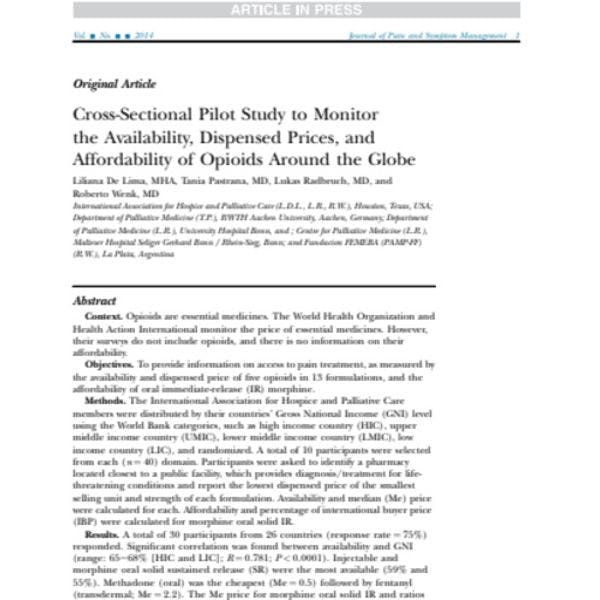Un estudio realiza un seguimiento de la disponibilidad, los precios de dispensación y la asequibilidad de los opioides en el mundo
Este artículo ofrece información sobre el acceso al tratamiento del dolor midiendo la disponibilidad y el precio de dispensación de opioides, así como su asequibilidad en todo el mundo. Más información, en inglés, está disponible abajo.
Suscríbase a las Alertas mensuales del IDPC para recibir información sobre cuestiones relacionadas con políticas sobre drogas.
The World Health Organization (WHO) recognizes palliative care and pain relief as critical public health issues. Strong opioids are a cornerstone of pain treatment, of which morphine is considered essential by the WHO.
In 2007, the International Association for Hospiceand Palliative Care (IAHPC) developed a list of Essential Medicines (EMLs) in Palliative Care, which includes opioids for the treatment of pain and other symptoms. Still, in many countries,
limited or no access is a significant problem. Developing countries with about 80% of the world population account for 6% of the global morphine consumption3 resulting inmillions of patients suffering needlessly.
Access to opioids is limited owing to several reasons, including restrictive drug control laws and regulations, lack of education, and high prices.
The WHO and Health Action International (HAI) developed a method to monitor and report the price of essential medicines as a measure of access,13 which has prompted some governments to lower the cost of medicines. However, with one exception, the WHO/HAI surveys do not include opioids, and there is limited information on their price and affordability.
In 2008, the IAHPC decided to develop the Opioid PriceWatch (OPW) Project as a component of the agreement of work as a nongovernmental organization in formal relations with the WHO. This article describes the pilot study implemented to test OPW.
The objectives of the article are to:
- Provide information on opioid availability globally;
- Show opioid price patterns among regions and countries, as reflected in differences in treatment costs, affordability, and differences in prices as a ratio of the international reference price; and
- Allow further analysis of the difficulties in availability and affordability of opioid analgesics and suggest possible strategies addressing the identified problems.
Keep up-to-date with drug policy developments by subscribing to the IDPC Monthly Alert.
Regiones
Perfiles relacionados
- World Health Organization (WHO)
